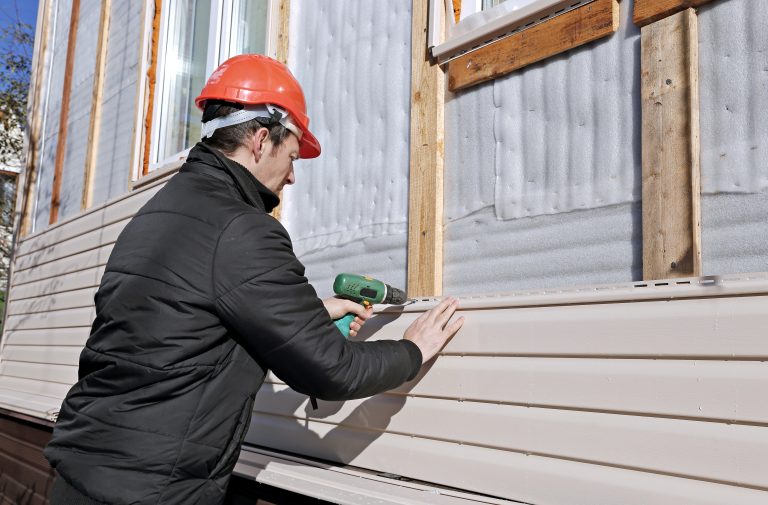The siding in your home endures years of constant exposure to the elements and various forms of damage. The siding helps maintain the correct temperature in your home by keeping the cold out and warmth in as the seasons change, while also preventing water from infiltrating your house because flood checks are not always accurate. As an aesthetic element to the exterior of your home, the siding can significantly boost curb appeal.
Over the years, wear and tear can trigger the deterioration of your home’s siding; thus, time will come when you need to replace the siding. When you’re eager to learn more about the siding replacement process, checking out reputable siding Cambridge providers or in any part of the world would greatly help.
If you’re planning to replace the siding, here are several signs that’ll tell you that it’s time for a siding replacement:
1. Loose Or Cracked Siding
When your home endures a severe weather event, the siding might end up in a poor state. The strong winds can loosen the siding, or even pry off entire planks or boards. Once the siding is loose, cracked, or has split, whether due to old age or damage from the wind, call a professional for an inspection to determine if there’s a need to replace the individual planks or sections, or for a total replacement.
2. Peeling Or Fading Siding
Different types of sidings have various characteristics. If you have wood siding, it can retain its color and form up to ten years under average conditions. By working with a reliable siding Kitchener service provider or one from wherever you live, a professional will ensure timely and efficient replacement of the siding in your home.
When your house requires frequent painting since the siding is peeling, discolored, or faded, it’s best to replace the siding. Depending on your specific requirements, consider switching to vinyl siding that’s resistant to the sun, or other alternatives, such as steel or fiber cement sidings that are readily available in different colors and styles. These types of sidings are low-maintenance and can hold their color for many years.
3. Warping Or Rotting
If the siding in your home shows signs of rot or warp, or turns soft, it’s time for a replacement job. When testing for decay, insert a pry bar or screwdriver carefully under the boards and joints along the gutters to check if the material beneath is soft. In most cases, it’s a clear sign of severe, irreversible damage due to rot.
It would be best to tap on the exterior of the siding using the handle of a screwdriver. If the material starts to crumble or split, or sounds hollow, it indicates dry rot. Generally, dry rot is practically hard to distinguish since it festers under the surface, leaving only the upper layer of the siding intact.
4. Holes Or Other Forms Of Damage
When your siding sustains damage from severe weather events or bumps from objects, it can end up with holes, cracks, or dents. If there are miniature holes in the siding, it might be burrowing insects, such as ants or termites, especially when you have wood siding.
Regardless of the size, cracks and holes can later lead to more significant issues over time, such as allowing rain and snow to seep through. Dealing with this damage can be an expensive ordeal, mainly if insects or moisture infiltrates your home’s structural framework.
5. Paying High Utility Bills
If your monthly utility bill stays on a consistent range, but suddenly increases, it might be an indication that your siding is no longer functional. One of the tasks you need to do is double-check your electrical consumption, inspect the roof for leaks, and check the insulation in the attic if it’s functional. If there are no evident problems, the siding might be the culprit. Replacing your siding with a new one can help lessen your energy usage and lower your utility bills.
6. Bubbling Of Wallpaper Inside The House

One way to know if the siding in your house is no longer functional is the bubbling or peeling of the wallpaper inside your home. It’s a clear indication that the siding on the outer side has a problem. In most cases, moisture or water can seep through a crack or hole in the siding.
7. Signs Of Damage By Animals
For those living close to wooded areas, it’s likely for animals to infiltrate your home through the siding. Mice, squirrels, and even birds look for areas that can provide them with warmth, and your house is an ideal source, especially during the winter. When your home has wood siding or it’s showing signs of aging, it’s the best time to consider getting a replacement to protect your home from damage.
Conclusion
The siding in your home plays a vital role in protecting the structure against the weather and boosting its curb appeal. Although the siding can endure years of wear and tear, a time will come when it’ll eventually deteriorate and problems will arise. Once you observe these signs on your siding, you need a replacement job soon to ensure your home stays safe and sound for many years.

